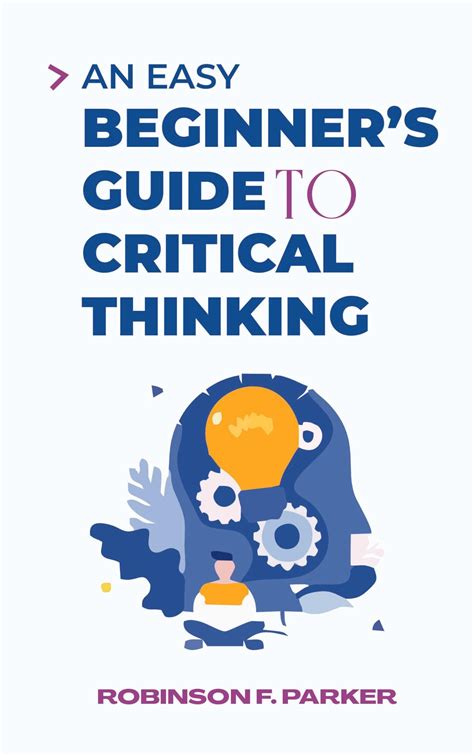Introduction

Critical thinking is an indispensable skill in today’s complex and rapidly changing world. It empowers individuals to analyze information objectively, form informed judgments, and make sound decisions. To cultivate this essential ability, we must engage in critical thinking exercises that challenge our assumptions and push us to think more deeply.
Core Critical Thinking Questions
1. What are the Facts?
- Gather evidence from reliable sources.
- Identify the assumptions underlying the information.
- Distinguish between facts and opinions.
2. What are the Perspectives?
- Consider different viewpoints and biases.
- Recognize the limitations of your own perspective.
- Seek out diverse sources to broaden your understanding.
3. What is the Evidence?
- Evaluate the quality and relevance of evidence.
- Identify biases or inconsistencies in the evidence.
- Determine the strength of the evidence to support a claim.
4. What are the Inferences?
- Draw logical conclusions based on the evidence.
- Avoid making unsupported assumptions.
- Consider alternative explanations and interpretations.
5. What is the Significance?
- Determine the importance and implications of the findings.
- Consider the broader context and potential consequences.
- Assess the value of the information for decision-making.
Critical Thinking Applications
1. Problem Solving
- Define the problem clearly.
- Brainstorm multiple solutions.
- Analyze potential consequences.
- Select the most effective solution.
2. Decision Making
- Gather relevant information.
- Identify and weigh pros and cons.
- Consider different perspectives.
- Make a decision based on sound judgment.
3. Communication
- Express ideas clearly and concisely.
- Use logical reasoning to support arguments.
- Listen actively and respond thoughtfully.
- Persuade others with evidence-based insights.
4. Innovation
- Ideate: Generate creative ideas using the “SCAMPER” method (Substitute, Combine, Adapt, Modify, Put to another use, Eliminate, Reverse).
- Analyze: Evaluate ideas for feasibility and potential impact.
- Develop: Refine and implement the most promising ideas.
- Evaluate: Monitor progress and adjust strategies as needed.
Benefits of Critical Thinking
- Improved problem-solving abilities
- Enhanced decision-making skills
- Increased creativity and innovation
- Greater self-awareness and open-mindedness
- Better communication and persuasion skills
Effective Strategies for Critical Thinking
- Active Listening: Pay undivided attention and ask clarifying questions.
- Questioning: Challenge assumptions, explore perspectives, and seek evidence.
- Reflection: Take time to consider different ideas and their implications.
- Collaboration: Work with others to share diverse perspectives and find solutions.
- Practice: Engage in regular critical thinking exercises to sharpen your skills.
Why Critical Thinking Matters
In the 21st century, critical thinking is an essential life skill that enables us to:
- Navigate a complex and information-rich environment.
- Make informed decisions in our personal and professional lives.
- Contribute meaningfully to society by solving problems and generating innovative ideas.
- Adapt to rapidly changing technological advancements and societal challenges.
Conclusion
Cultivating critical thinking skills is crucial for personal development and success in an ever-changing world. By embracing these critical thinking questions, engaging in active reflection, and applying effective strategies, we can unleash our analytical prowess, make sound judgments, and achieve our full potential.
Appendix
Table 1: Types of Evidence
| Type | Description | Example |
|---|---|---|
| Empirical | Based on observation or experimentation | Scientific data |
| Anecdotal | Based on personal experiences | Testimony of a witness |
| Logical | Based on reason and inference | Mathematical proofs |
| Testimonial | Based on statements from experts | Expert opinions |
Table 2: Characteristics of Critical Thinkers
| Attribute | Description |
|---|---|
| Open-mindedness | Willingness to consider alternative perspectives |
| Analytical | Ability to break down complex ideas |
| Skeptical | Questioning assumptions and seeking evidence |
| Reflective | Taking time to consider different ideas |
| Self-aware | Recognizing their own biases |
Table 3: Steps to Solve a Problem Critically
| Step | Action |
|---|---|
| 1 | Define the problem clearly. |
| 2 | Gather relevant information. |
| 3 | Brainstorm multiple solutions. |
| 4 | Analyze potential consequences. |
| 5 | Select the most effective solution. |
Table 4: Strategies to Enhance Critical Thinking
| Strategy | Description |
|---|---|
| Socratic Questioning | Asking probing questions to challenge assumptions |
| Devil’s Advocacy | Taking the opposite perspective to identify weaknesses |
| Lateral Thinking | Generating unconventional ideas |
| Mind Mapping | Visualizing relationships between ideas |
